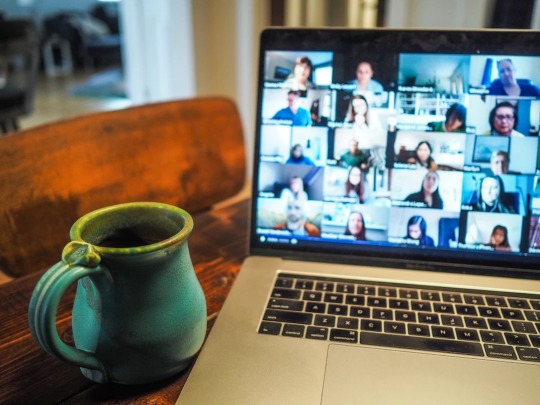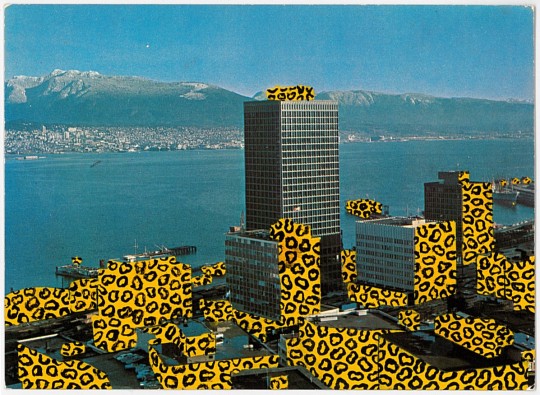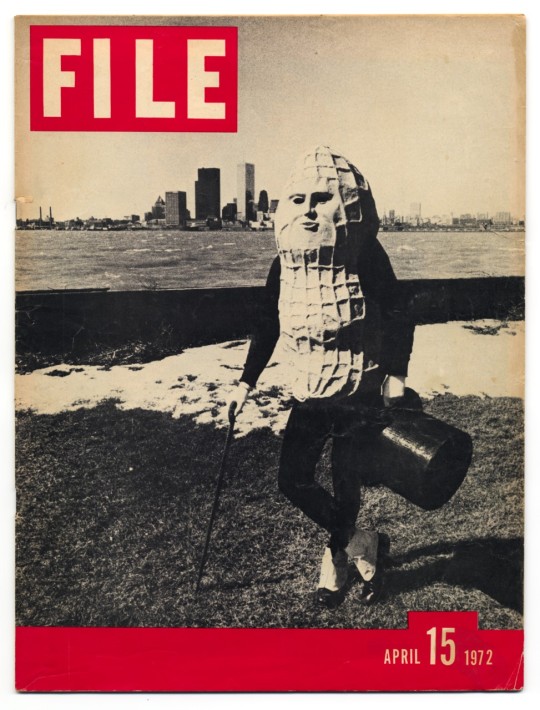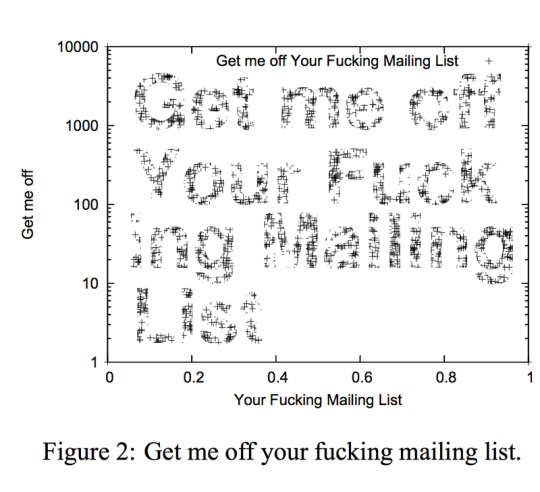#artist networking
Explore tagged Tumblr posts
Text
Musicians, writers, and visual & performing artists!
Join Merry Knell DIY Music Academy founder, Mary Lemanski, for a networking hour on the Second Wednesday of Every Month through 2023.
To give you an overview of the event, we'll briefly introduce ourselves and talk about what we do. Then if anyone has something in their business they'd like feedback or help from the group, they can share what they need (maybe you need other artists for a project or maybe you need help with marketing, as examples). Then we will discuss what kind of projects we can work on as a group (online concert with live visual art being created, IRL music & art festival, etc.), and finally we can all share our links and contact info in the Zoom chat.
If it is a large group, we can separate out into breakout groups for more effective conversations.
Looking forward to meeting with all of you!
For Zoom link, visit facebook.com/merryknell

#networking#professional networking#artist networking#music networking#performing artist networking#writers networking#merry knell diy music academy
2 notes
·
View notes
Text
Thurs. July 7, 2022: Cleaning Up Some Messes
Thurs. July 7, 2022: Cleaning Up Some Messes
image courtesy of Mote OO Education via pixabay.com Thursday, July 7, 2022 Waxing Moon Pluto, Saturn, Neptune Retrograde Partly Cloudy and pleasant Garden update over on Gratitude and Growth here. Yesterday was not as productive as I’d hoped. I am tired, trying to shake off the last of the sense memory stress. Also, as an astrologer friend reminded me, we’re in the sun sign of Taurus right…

View On WordPress
#"The Series Bible: Creation and Maintenance#"The Little Woman"#31 Prompts#artist networking#Boris Johnson#boundaries#Gratitude and Growth#HOW TO DO THE WORK#meditation#musicians#Open studios#script coverage#Setting Up Your Submission System#Spectrum#Taurus#The Graveyard of Abandoned Projects#Topic Workbooks#viral tweet#Word X Word
0 notes
Photo

we created a discord server for artists to make friends, share refs/inspiration, and do drawing prompts!!! a chance to be creative and network in these trying times!!! pls feel free to join us if you’d be interested!!!
https://discord.gg/52psCNF
5 notes
·
View notes
Text
Networking platforms
Ok so just for kicks here is the full list of my current social platforms. I am very much looking to interact and network across all of them so feel free to pop in. I will more than likely follow back. Deviantart Tumblr Facebook Artstation Pinterest Twitter Patreon
7 notes
·
View notes
Photo

Musing over Metro Media and Mail Art: Nostalgia for (big) small networks
In September 2014, I had upwards of 1700 unread email messages in my inbox. The majority of those unread emails came from organizations for which I had at one time completed a survey, signed a guest book, used a service, or thought (albeit very briefly) that “it would be nice to hear what special offers they’ll have in the future.” Besides solicitors, many unread messages were actually from myself: a file, URL, or note that I had sent, addressed to “Me,” and then promptly forgotten about. Two or three were from my mother, and when I uncovered these from within the 1700 email mound, I felt severely guilty of my passivity.
In October 2014, I found myself elbow deep in a fragrant box of typewritten correspondence from the 1970s and 80s. Unlike my inbox, these letters had all been read carefully, and responded to with feeling. Lenore Coutts didn’t necessarily organize her files with detail precision, but she also didn’t keep her correspondences for nothing. They collectively formed a hazy picture of the 1971-1984 Vancouver organization Metro Media, which she directed in its final years. Without these flurried papers, we might not know the full extent of Metro Media’s impressive impact on Vancouver’s artist run centres. I also may not have become so compelled by the history of correspondence in general—or for that matter, how the postal service informed the internationally influential movement of Mail Art.
Mail Art was originally used—like much conceptual art of its time—to circumvent the gallery structure. Rebellious in their nature, many artists of the 1960s and 70s wished to undermine the hierarchies of commercial and museum art practices. Akin to landscape artists’ site specificity, by creating artworks that were enlivened only through the process of mailing and receiving, mail artists worked against typical exhibition formulas.
Beyond eschewing existing institutional structures however, there was a secondary function that Mail Art fulfilled. This was to connect with other artists via meaningful correspondence. Emily Robertson suggests that Mail Art “provided artists with a feeling of independence and self-sufficiency by replacing the gallery, as a means of validation, with a large network of other artists” [1]. Unlike trying to find exhibition opportunities, getting involved with this form of networking was simple. Specifically, all one would have to do to be included was to get their hands on a recipient list, become included on one, and send out multiples of their own postal creations.
Joining the network became easier once Mail Art extended past New York City in the early 1970s. Mail Art was actually quite exclusive in its earlier iterations; this would have been due to a more correspondence heavy intention, or what Ken Friedman explains was a “reciprocal or interactive communication” through Mail Art, as opposed to a kind of “one way communication, mailed out without any requirement for response” [2]. Ray Johnson is the figure who heavily instigated Mail Art in NYC; he also started the New York City Corespondance School in 1962 (sic) [3]. Johnson’s postcards were original collages, often inspired by the recipient in some manner in order to strike up a dialogue. By the end of his life, Johnson had acquired such an impressive and coveted list of artists’ addresses as to become “the envy of many colleagues” [4].
The listing of mail artist addresses opened quite quickly through the use of magazine publications. Toronto’s artist group General Idea created FILE magazine “as a way to archive—or file—[the] deluge of mail art” that was surging slowly across North America [5]. As well as printing Mail Art from their regular contributors, FILE also published recipient address lists and image request lists: these were the readers’ open invitation to get involved with the network.
It was fitting to use a medium as democratic as the postal service to create self-supporting artist networks. Considering the era’s technological contexts—before the privileges of fax machines, cell phones and the Internet—the post office was a means of relatively cheap communication that all citizens were already given access to.

Along with her own typewritten correspondences, Lenore Coutts kept binders and boxes full of Mail Art. These at first seemed slightly out of place in the archive, considering that Metro Media primarily dealt with video and sound. However, it is in the organization’s 1971 mandate to promote “community involvement in producing programs and publications” [6]. In this context, it should not come as a surprise to discover Metro Media opened itself to monthly Mail Art exhibitions in its latter years, and provided Vancouver artists with cheap access to their color Xerox machine beginning in 1982.
Xerox machines became an important tool of Mail Artists. Much of what makes up Coutts’ Mail Art binders were Xeroxes, which Metro Media’s monthly Mail Art exhibition organizer GX Jupitter Larsen says was integral to in order to save costs. “You don’t see that much of it in contemporary Mail Art,” he muses, “but back then I guess people had to save as much money for postage as possible . . . it was the most economic medium to take advantage of in order to make multiple copies” [7]. As Mail Art networks expanded exponentially through the 1970s, more and more copies would become necessary.
According to mail artist Guy Bleus, there is a subcategory of Mail Art called Copy Art. In his definition, copy art is:
art without an original. An important part of it is xerography or Xerox mail art. Copy art is an instant art form and provides a quick method to get multiples . . . [and also creates] the potential of copy art cards, enlargements, reductions, degenerations, body art, [and] copy motions. [8]
I have two very particular reactions to the idea of Copy Mail Art. The first is a flutter of nostalgia for pre-Photoshop, photographic manipulations. The second is the realization that Copy Mail Art had the potential to reach many people all at once, providing an intimate experience unusual within the realm of mass production.
While absent-mindedly scrolling through my Facebook Newsfeed last week, I came across a flagrant gem—one that humorously reminded me of my inbox full of solicitors. David Mazières and Eddie Kohler published a faux-scholarly article called “Get me off Your Fucking Mailing List,” which contained only those seven words for ten full pages. This was Mazières and Kohler’s response to so-called predatory publishers, or open-access online journals that troll university inboxes. These scam publications “pose as legitimate journals so researchers will pay their processing fees” [9]. Besides being told that their article was “excellent,” the two were prompted to pay the International Journal of Advanced Computer Technology $150 for publishing their work [10]. In this instance, not only did Mazières and Kohler prove that these journals don’t peer review, they also proved that they don’t even open their respondents’ attachments.

This kind of correspondence is comical, but only because it exposes the passivity typical of our online interactions. Now, while our online networks expand beyond cognitive reach, Mail Art might re-find its political roots in satirical spam-art. “It’s steady work, with few pauses” writes Graham Parker in a short text called Spam Filtering [11]. This process, he continues, is “[a] repetitive and thankless task just on the side of unthinking” [12]. And perhaps it is just as unthinking as the spam itself, which is exemplified the rest of Parker’s artists’ book Fair Use (Notes from Spam), where the artist uses his own Junk folder as fodder for a nonsensical narrative. The texts ring familiarly in our spam-filter memories:
… fast growing (up to 1cm per day), matures early (at 40-60 days old) and produces millions of spores. Do you want opt0ut? Stmoachaches … This email was sent to you by your friend from our software stock shop. Your friend’s message: Yesterday I found great software stock eshop while I was looking for Really cheap prices and great offers everyday . Fellow, look here, isn't it a great offer? … I got your contact through my personal search on the internet. I am contacting you due to the present situation as regards to a special panel set up by the present democratic administration … (sic) [13]
The democratic fashion from which Mail Art was borne eventually meant that any control or persuasion of the movement was usurped from its original creators. In the eyes of some, this was a negative development. Robertson deliberates that “FILE had opened Pandora’s box, letting the world’s artistic misfits believe that a stamp could replace actual talent” [14]. Sloughs of generic worldwide correspondence didn’t slow down the movement, but certainly signaled a change in its attitude. An original contributor Robert Cumming, for example, demanded that mail artists new to the genre “stop violating [his] mail slot each morning,” and that he could “no longer answer a bad piece of mail” [15]. For Cumming and many others, Mail Art had become nothing more than glorified junk mail. FILE magazine’s last issue with Mail Art content was in 1975.
The network outgrew some of its original publications, but alternative ones took their place. Exhibitions occurred worldwide and the network kept expanding. It became an almost necessary facet of Mail Art participation to save what was received. Larger publications would have felt this responsibility most heavily, with submissions stacking up daily. FILE’s creators, for example, opened up Art Metropole in order to preserve the Mail Art that they were continually being sent. Acquisitions ceased in 1996, and the archive’s permanent 13,000 item collection was donated to the National Gallery of Canada in 1999 [16]. Here, visitors are welcomed to interact with the collection. All original envelopes have been removed, but a white box encases each item, allowing for the same exciting sensation of opening a piece of mail for the first time [17].
The only letters I have received in my physical mailbox over the past three months have been about government cheques or government debts, and a birthday card from my mother. I do however, correspond daily through email; attached to me at my waist, my iPhone does not hesitate to notify me once I have received another piece of electronic correspondence. When I look through Lenore Coutts’ yellowed letters and handwritten notes, I wonder at the pace of things before our online networks. Despite the urgency lacked from high-speed Wi-Fi, I get the sense that Coutts’ communications must have felt far more direct.
Mail Art was the symptom of artists’ desiring intimate and international contact with one another, outside of imposed gallery hierarchies. They used it to genuinely reach out in ways that online social networking only attempts to achieve. Of course I do not blame Mail Art for the junk mail phenomenon, which must have begun shortly after postal communication became available. But it is exemplary of any network which expands to such an overwhelming degree that multitudinous correspondence will inevitably slip into the unwelcomed status of spam. Mail Art has become glorified—often shown in the institutions it once eschewed—and I wonder if it could ever have been kept free from the clutches of social overindulgence. It only proves the same of our current forms of communication; now that our networks are opened wide, we must struggle to pull them shut with email filters and customizable privacy settings. Indeed, privacy has become the ultimate showdown: a holding-back between ourselves and the potential suffocation of the wide world web.
Text
Alexandra Bischoff
Notes/Sources
[1] Robertson, Emily. Pushing the Envelope: The Evolution of Mail Art in Canada. Thesis. Montreal, QC. Concordia University, 2007. p 31. Apr. 2007. JSTOR. Web. 3 Nov. 2014.
[2] Welch, Chuck. Eternal Network: A Mail Art Anthology. Calgary: U of Calgary, 1995. p 3. Print.
[3] Ed Plunkett originally named the school, which Johnson adopted with the intentional misspelling. Found in: Robertson, Emily. Pushing the Envelope: The Evolution of Mail Art in Canada. Thesis. Montreal, QC. Concordia University, 2007. p 9. Apr. 2007. JSTOR. Web. 3 Nov. 2014.
[4] Ibid. p 20
[5] Bright, Betty. "The Magazine as Mirror." No Longer Innocent: Book Art in America, 1960-1980. New York City: Granary, 2005. p 152. HUMN-311-F005 2014 Moodle. Web. 11 Sept. 2014.
[6] Cook, Robert. Proposal for a Provincially Funded Community Media Resources Centre. Proposal. Comp. Bill Bargeman, Penny Joy, Dennis Ribideau, Sheila Roswell, and Sheila Smythe. Vancouver: Metro Media, 1971. p 41. Print.
[7] Larsen, GX Jupitter. Metro Media Mail Art. GX Jupitter Larsen. Rec. 23 Nov. 2014. WAV.
[8] Bleus, Guy. "Mail-Art Initiation." MAIL-ART INITIATION. Web. 22 Nov. 2014.
[9] Stromberg, Joseph. ""Get Me Off Your Fucking Mailing List" Is an Actual Science Paper Accepted by a Journal." Vox. 21 Nov. 2014. Web. 22 Nov. 2014.
[10] Ibid.
[11] Parker, Graham. Fair Use: Notes from Spam. London: Book Works, 2009. Print.
[12] Ibid.
[13] Ibid.
[14] Robertson, Emily. Pushing the Envelope: The Evolution of Mail Art in Canada. Thesis. Montreal, QC. Concordia University, 2007. p 37. Apr. 2007. JSTOR. Web. 3 Nov. 2014.
[15] Ibid. p 38
[16] Ibid. p 47
[17] Ibid. p 48
Images
Eric Metcalfe, Leopard Realty Postcard, 1971-72. Collection of the Morris and Helen Belkin Art Gallery, gift of the artist, 1997.
General Idea, FILE Magazine, Vol. 1, No. 1, April 1972. Collection of the Morris/Trasov Archive, Morris and Helen Belkin Art Gallery. Courtesy of the Estate of General Idea; Photo: Michael R. Barrick.
Eddie Kohler and David Mazières. “Get Me Off Your Fucking Mailing List Figure 2,” 2014. Courtesy of Eddie Kohler.
1 note
·
View note
Text
YouTube Overtakes Facebook As Most Popular Site Among Teens
For a musician to stay on top of their game they need to heed a few necessary rules. One of them has to do with how they deal with their fans. First of all, content is always king. This means that even though you may have one successful song or album on the radio, you need to keep producing a stream of them to retain the recognition. Another thing is that musicians need to keep an eye on where their fans are congregating. Not everyone can be the king of all social media outlets, so knowing which ones to go to will cut your work down by a large amount. Facebook is still one of the best places to meet up with your friends and check on their lives – but it isn’t always the best choice for producers and musicians. Studies have shown that YouTube actually gets more of the younger audiences than Facebook does. Perhaps this is because Facebook was never designed to be a media warehouse. They were designed to be a social connection for peer to peer communication. If you really want to watch videos and other songs, YouTube is still the best place for that to happen. http://www.hypebot.com/hypebot/2013/11/youtube-overtakes-facebook-as-most-popular-site-among-teens.html
0 notes
Link
So late last night I made a Blue Canvas account... As of right now I only have two peers (one being by default Blue Canvas staff)... still discovering new artists to follow... If you are on there feel free to ADD me and send me a Message letting me know who you are! :D
1 note
·
View note